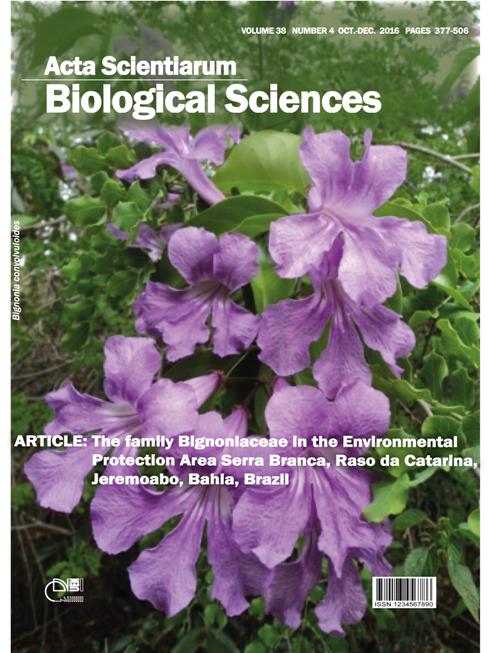<b>Fungal production of the anti-leukemic enzyme L-asparaginase: from screening to medium development
Abstract
The treatment of acute lymphoblastic leukemia is challenging due to side effects, efficacy of the available drugs, and costs. Utilization of L-asparaginase as a therapeutic agent is essential to increase survival of patients. However, costs are elevated and the bacterial forms of the enzyme cause reactions that result in its inhibition by the immune system. Therapeutics alternatives may be searched among eukaryote producers, like fungi. Twelve strains of filamentous fungi were evaluated regarding expression of L-asparaginase activity. The profile of nitrogen assimilation and radial growth were determined for strains which showed higher production ratios. Three media were formulated after selection of the carbon source and carbon/nitrogen ratio that better induced L-asparaginase expression by Penicillium sp. and Fusarium sp. The enzyme activity produced in liquid media reached 8.3 U min.-1 mL-1 (Penicillium sp. T6.2) and 11.4 U min.-1 mL-1 (Fusarium sp.) after 72 hours of cultivation in Bacelar-1 medium. These data show that good producers can be found among fungi, and adjustment of productive processes may offer an alternative to implement eukaryote L-asparaginase production.
Downloads
DECLARATION OF ORIGINALITY AND COPYRIGHTS
I Declare that current article is original and has not been submitted for publication, in part or in whole, to any other national or international journal.
The copyrights belong exclusively to the authors. Published content is licensed under Creative Commons Attribution 4.0 (CC BY 4.0) guidelines, which allows sharing (copy and distribution of the material in any medium or format) and adaptation (remix, transform, and build upon the material) for any purpose, even commercially, under the terms of attribution.
Read this link for further information on how to use CC BY 4.0 properly.












1.png)




3.png)













